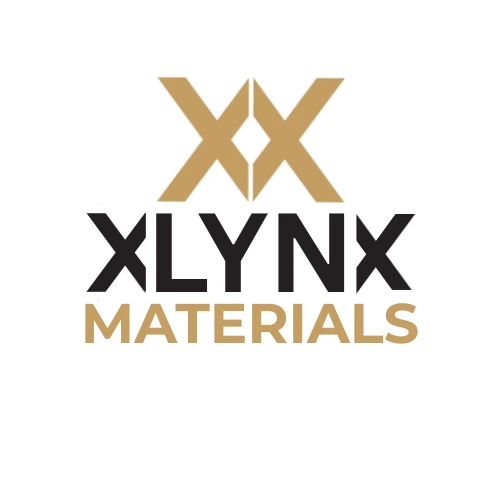The Evolving Printed Circuit Board Landscape
As the fundamental building blocks of virtually all electronic devices, Printed Circuit Boards (PCBs) are continuously evolving. XLYNX Materials provides innovative molecular crosslinkers and advanced materials to overcome inherent challenges and enable new possibilities in PCB design, manufacturing, and performance.
Key Market Trends
The PCB market is being shaped by several critical trends:
- High-Frequency & High-Speed Performance: Modern applications like 5G, high-speed digital computing, and radio frequency (RF) communications demand PCBs that can handle much higher frequencies and data rates. There is a critical need for low-loss thermoset materials that minimize dielectric constant () and dissipation factor ().
- Miniaturization & Increase Density: As electronic devices become smaller and more powerful, PCBs need to pack more components into a smaller space. This trend towards miniaturization requires higher-density interconnects, which places a premium on patterning methods that can achieve high resolution and fidelity without damaging the materials.
The Challenge With Today’s Materials
Meeting the demands of modern printed circuit boards (PCBs) is challenging for traditional materials and methods. Incumbent epoxy-based technologies compromise electrical performance due to their reliance on polar groups for curing, which results in a high dielectric constant (Dk) and dissipation factor (Df). This makes them unsuitable for high-frequency applications where signal integrity is essential. Furthermore, traditional adhesives and molding compounds often struggle to ensure robust adhesion, a root cause of critical PCB failures like blistering and layer delamination.
Electrical Performance
We have a proven track record of helping customers overcome these challenges. Our innovative materials enable superior signal integrity in high-frequency applications (5G, RF, high-speed digital) by delivering ultra-low Dk and Df. We’ve successfully achieved aspirational goals of Dk < 2.4 and Df < 15×10⁻⁴ at 10 GHz with fluorine-free products, providing a clear path to high-performance electrical design without the compromises of conventional materials.
Eliminating Delamination
Poor adhesion is a root cause of critical PCB failures like blistering and layer delamination. Our products enhance adhesion for dielectric fillers (reducing intralaminar delamination) and for resin/ conductor interfaces (reducing interlaminar delamination). This is vital for robust multilayer stack-ups and ensuring long-term reliability in challenging environments. Traditional adhesives and molding compounds often struggle with enhancing long-term reliability and ensuring robust adhesion to the various substrates used in modern PCB manufacturing. XLYNX offers up to 900% greater adhesion than leading adhesives on dissimilar substrates.
Mechanical Stress & Reliability
PCBs must withstand significant mechanical and thermal stresses throughout their lifespan. XLYNX Materials provides products that significantly improve properties like tensile strength, bend strength, and overall material stability, strengthening response to mechanical stress and enhancing reliability. Our materials contribute to an optimized Coefficient of Thermal Expansion (CTE) and increases Glass Transition Temperature (Tg).
Processability & Integration
PCB manufacturing requires materials that are easy to process and integrate. Many ultra-low Dk/Df materials are thermoplastics that inherently lack the chemical functional groups needed for traditional curing reactions. XLYNX’s solutions enable the use of these new polymers for dielectric materials and offer tailored properties for improved machinability, lower viscosity inks for smoother films, and reduced moisture absorption. This leads to efficient processes like low-temperature curing for sensitive substrates and advanced additive manufacturing methods, significantly improving manufacturing yield and design flexibility.
Enabling Next-Generation Technology
We offer solutions across a broad range of printed circuit board applications, including:
- Low-Loss Thin Films: Our technology enables the crosslinking of resins to create well-cured thermosets that maintain a low dielectric constant (Dk) and dissipation factor (Df) for high-speed signal integrity.
- Resin Additive or Filler Primer: Our products can be used as a reactive additive or primer within resin systems to improve mechanical properties and create a robust, well-cured thermoset network. This enables the use of low-Dk/Df fillers and resins that traditionally lack the functional groups needed for curing.
- Photoresist: Our carbene-based chemistries allow for the direct optical patterning of next-generation materials. This resist-free method provides a nondestructive and high-resolution approach to create intricate designs for advanced displays and sensors.
- Adhesion Promotion: Our products form strong, permanent covalent bonds; which is a game-changer for reliable adhesion to materials that traditionally lack functional groups.
Our technology provides a competitive advantage by enabling the use of materials that are traditionally difficult to cure. We empower manufacturers to optimize key properties like the coefficient of thermal expansion (CTE), Young’s modulus, and moisture absorption, ensuring unmatched performance and reliability in the most demanding applications.


